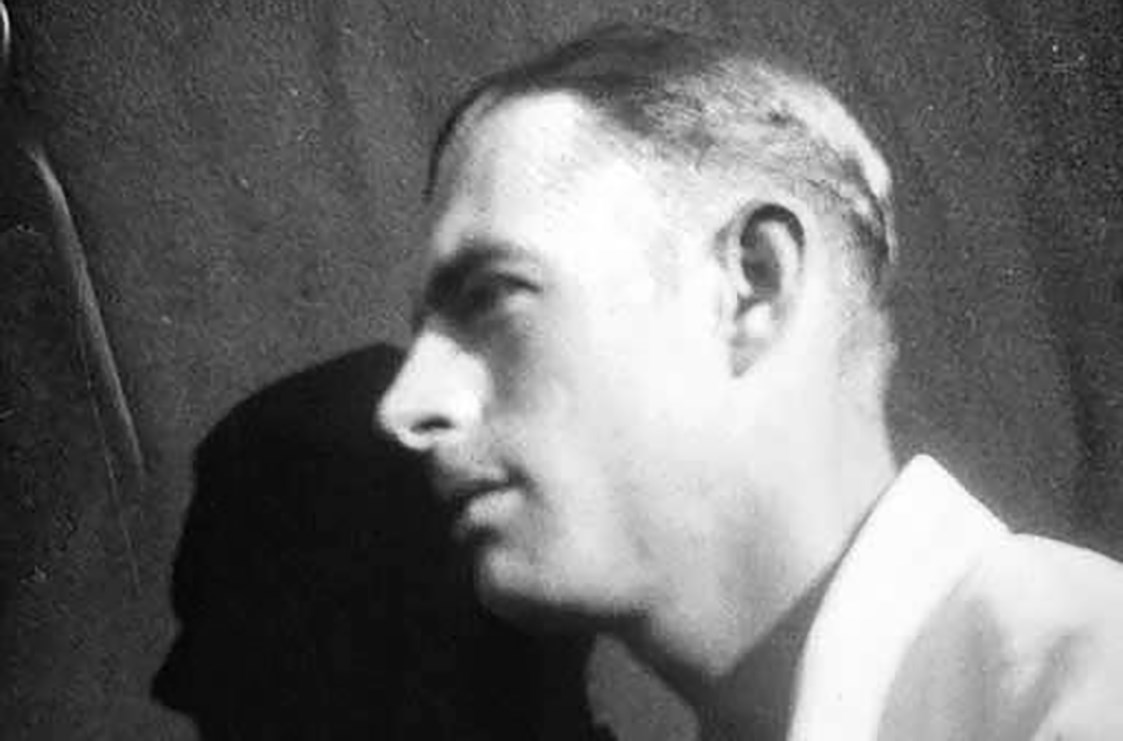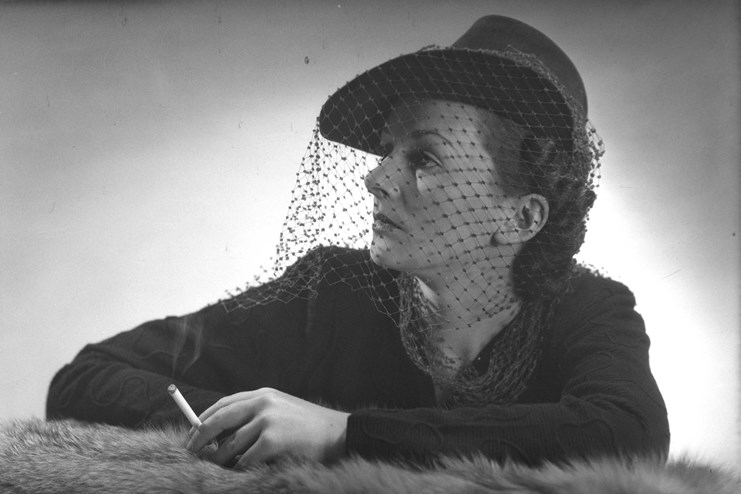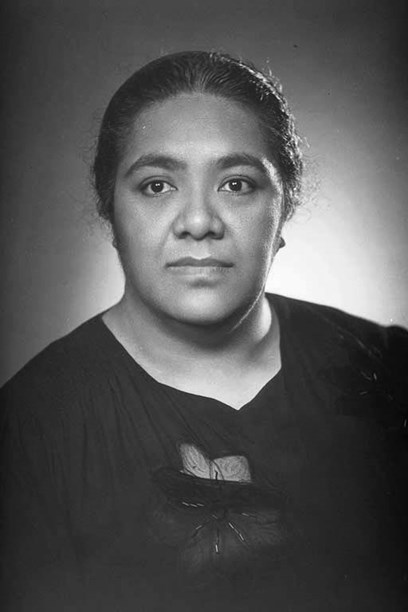Stories
Clifton Firth
1904-1980

Clifton Firth and his wife Patricia opened a commercial photography studio in 1938. Over the next few decades he became known for his portraiture and fashion photography - particularly his use of dramatic lighting influenced by Hollywood glamour.
Reginald Clifton Firth was born in Auckland on 12 April 1904 into a wealthy family. His grandfather, Josiah Clifton Firth, was an ambitious pioneering pastoralist and businessman who at one stage owned an enormous estate where Matamata now stands, and his father and younger brothers established the Firth Concrete Company. Clifton, upon finishing school, attended an Auckland commercial art school for a short period as well as night classes at Elam School of Art and was then employed in the family business as a graphic designer.
In 1933 he married Joyce Patricia Fitzherbert, a journalist, in Auckland. In the late 1930s Patricia studied photography at a portrait studio in Queen Street, while Clifton continued with freelance graphic design. Together they established a commercial photography studio, which had several Auckland addresses before settling at 110 Queen Street in 1938, where it remained until Clifton’s retirement in 1974.
Clifton’s arrangement of type and its relationship to the image followed Bauhaus design conventions which were innovative in New Zealand print advertising at the time, while his photographs were influenced by black and white Hollywood glamour portraits - a dramatic blend of light and dark to enhance and flatter the subject’s features. The resulting large black and white negatives were retouched using soft graphite pencil to fill in facial lines and soften blemishes before printing.
These shots of a Milne & Choyce evening gown exemplify Clifton Firth's use of architecture and graphic imagery, particularly Bauhaus design, in his portraiture photography. Sir George Grey Special Collections, Auckland Libraries, 34-M7E1 and 34-M7E3. No known copyright restrictions.
Despite the economic depression, the 1930s were seen as a golden age of glamour for women’s fashion. While millions of people were plunged into economic depression the world of fashion, perhaps as a response to the hardship people were facing, embraced fantasy and glamour. It is remembered as the era of escapism and the emergence of the glamorous Hollywood siren.
This series of photos by Clifton Firth were taken at the Occidental Hotel, circa 1939. Sir George Grey Special Collections, Auckland Libraries. No known copyright restrictions.
But alongside the glamour, the Depression brought about a democratisation in the women’s clothing market. Costly decorative techniques were replaced with simple art deco lines and patterns, and cheaper fabrics were used such as rayon rather than silk. Essentially, it was the beginning of the consumer age, with a shift to ready-to-wear fashions which women of modest means might be able to afford, a trend continued to this day. Paris still dominated fashion, with fashion magazines and retailers advertising garments 'in the style of' the Paris fashion houses.
This meant that Clifton Firth’s fashion and portrait photography is from a time when international fashion styles were being disseminated like never before and fashion was more affordable and accessible. Much of his commercial work was producing seasonal photography for one of Auckland's most up-market retail department stores, Milne & Choyce, also located on Queen Street directly opposite his studio. Fashion retail in Auckland at this time was dominated by five major department stores where shoppers could be individually fitted for clothes and luxury items were sold alongside household goods. Department stores had their own workrooms which produced garments for their stores, completed fittings and alterations and even made to order for their clientele.

Clifton Firth produced seasonal photography for one of Auckland's most fashionable department stores, Milne & Choyce. Image courtesy of Sir George Grey Special Collections, Auckland Libraries, 34-M7B2. No known copyright restrictions.
Following the Depression, the war years led to a demand for portraiture and Firth Photography became a highly successful business, employing seven staff. That Clifton embraced American Hollywood glamour in his portrait work around this time comes as no surprise. During the Second World War New Zealand had strategic importance for operations against the Japanese in the Pacific. American forces were based in New Zealand between 1942 and 1944, here to train for offensives ahead or to rest and recover their health following a stint on the front line. No doubt this influx of thousands of young, well paid Americans shifted the local culture and fashion of our main centres. Inevitably, 1500 or so New Zealand women married American servicemen in these years.
Apart from New Zealand and American servicemen, many Aucklanders commissioned portraits and throughout the 1930s and 1940s Clifton’s portraits were regularly printed in local journals and magazines, while his architectural photography was often published in Home and Building magazine.

Portrait of the Queen of Tonga, Salote Tupou. Image courtesy of Sir George Grey Special Collections, Auckland Libraries, 34-T152. No known copyright restrictions.
In the mid 1940s Clifton opened a second photographic studio in Cathedral Square, Christchurch and while he remained in Auckland he would travel to Christchurch every few weeks. His friend, musician and photographer Frank Hofmann, joined him in the studio in 1942. Frank Hofmann later established Christopher Bede Studios, a national chain that did advertising photography as well as wedding and family portraits.
Clifton and Patricia Firth divorced in 1940, and he married Melva Martin in the same year, with whom he had two sons and a daughter. Clifton was a slim man who dressed with flair, wore glasses, smoked a pipe and usually sported a moustache. Described as a "post war dandy, self-opinionated and humorous", he made his home and studio meeting places for a large group of artists and academics, including poets A R D Fairburn and R A K Mason with whom he shared an active interest in left-wing politics, philosophy and art. Clifton read and wrote poetry (although nothing was published), and was an enthusiastic painter, exhibiting his and other artists’ work in the ground level of his Queen Street studio. He wrote articles on photography and art, and exhibited and lectured regularly at the Auckland Photographic Society during the 1940s and 1950s.

This image is one of a series with Hugh Porter, all taken on the same day, perhaps intended for a modelling portfolio. Image courtesy of Sir George Grey Special Collections, Auckland Libraries, 34-P518K. No known copyright restrictions.
Clifton Firth died on 31 August 1980, at Milford, Auckland, survived by his wife, daughter and one son. Auckland City Libraries holds a collection of over 100,000 of Clifton Firth's photographic negatives. The collection includes portraits of prominent New Zealanders, members of Auckland’s leading families, famous artists and literary figures, fashion models, debutantes and advertising images for hats, shoes, and garments.
Text by Jennifer Gillam. Banner image Sir George Grey Special Collections, Auckland Libraries, 34-Z140. No known copyright restrictions.
Last published May 2017.